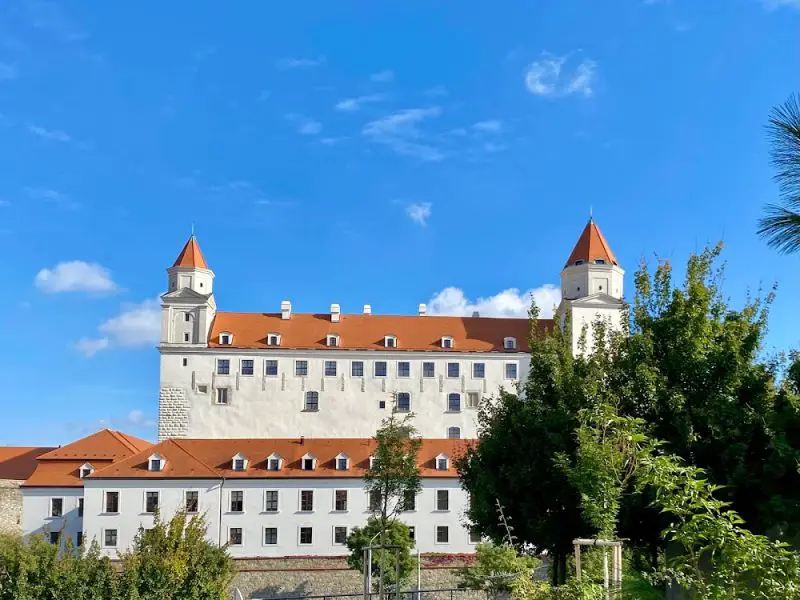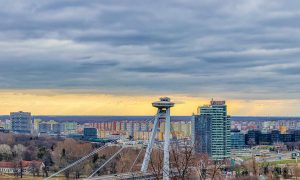Imagine a country with 180 castles and 425 palaces, in a total population significantly smaller than New York City. The most popular castles, such as those in Bratislava, Orava, or Borune, attract thousands of visitors each year.
Take a look at these interesting facts about Slovakia, a Slavic country, and make sure to leave a comment indicating which facts you already knew and which ones were new to you.
A true attraction among Slovak castles is the medieval Spiš Castle, one of the largest castles in Central Europe and a UNESCO World Heritage Site.
Slovakia and the Czech Republic have been two separate nations since January 1, 1993, following the Velvet Revolution and the subsequent Velvet Divorce. The only newer countries are Eritrea, Palau, East Timor, Montenegro, Serbia, Kosovo, and South Sudan.
Slovak women have an average of 1.3 children, according to the World Bank, one of the lowest rates in the world (compared to 1.8 in the UK, while Niger, topping the ranking, has 7.6).
Indeed, over six thousand caves have been discovered in Slovakia to date. The most beautiful caves are located in the national parks of the Low Tatras, Slovak Paradise, and Slovak Karst.
The world’s tallest horse statue is located at the Sports and Congress Center in Šamorín-Čilistov. Made entirely of stainless steel, it stands almost nine meters tall and weighs 20 tons.
About 80 percent of Slovakia lies at an elevation above 800 meters above sea level, culminating in the Tatra Mountains. The highest range of the Carpathians, forming a natural border between Slovakia and Poland, is a designated UNESCO biosphere reserve, containing about 100 high-mountain lakes and waterfalls. It can be explored via a network of hiking trails.
The picturesque village of Čičmany in northern Slovakia is the world’s first folk architecture reserve.
The cellars beneath Červený Kameň Castle form the largest underground complex in Central Europe. Additionally, the oldest pharmacy was established here in 1649.
Slovakia’s capital, Bratislava, lies on the border with Austria and Hungary. This makes it the only capital city in the world that borders two independent countries. The Austrian capital, Vienna, is only 60 km away.
Slovakia is not only a member of the European Union but also belongs to the Eurozone. In 2009, the Slovak Koruna (SKK) was withdrawn from circulation after 16 years of use and replaced with the new currency – the euro (EUR).
The devil has a rock in Slovakia. A unique natural phenomenon, a mushroom-shaped rock called the Devil’s Rock, is located on a nature trail near the village of Budča (Zvolen). A large round boulder standing on a small area of a high cliff is extremely photogenic.
Near the village of Kremnické Bane in Slovakia, right next to the Church of St. John the Baptist, lies the geographical center of Europe. Unfortunately, due to different types of calculations, Slovakia is not the only country that boasts its geographical center of Europe. Another 7 European villages claim to also host this hypothetical midpoint.
Nearly 50 preserved wooden churches stand throughout Slovakia. They are part of the UNESCO cultural heritage. They are entirely wooden and built without a single nail. The oldest of these is the Church of St. Francis of Assisi in Hervartov (near Bardejov). It was built in 1500.
Slovakia has good genes. These world-famous people have Slovak parents or grandparents:
Angelina Jolie (grandfather from Košice)
Audrey Hepburn (grandmother born in Kovarce)
Andy Warhol (mother from Miková)
Paul Newman (mother from Ptičie)
Jon Bon Jovi (grandmother)
Since November 2014, all children, full-time students under 26, widowed or disabled pensioners under 62, and seniors over 62 are entitled to free train travel on the state railway. It is available only to citizens or permanent residents of European Union member countries.
Slovakia has a unique active geyser that spouts water to a height of 15 meters. It erupts every day and a half. Similar geysers are found only in Iceland.
With 9 national parks and 14 protected landscape areas, Slovakia is a paradise for tourists. No trip to Slovakia would be complete without a visit to the beautiful High Tatras mountains with peaks over 2,500 meters above sea level and glacial lakes formed thousands of years ago.
After Austria, Slovakia has the largest natural freshwater resources. These are primarily the underground reservoirs of Žitný ostrov. High-quality drinking water flows from their taps.
Slovakia has amazing mineral water sources and therapeutic thermal springs. Most of them are actively used for medicinal and recreational purposes in 21 spa resorts.
A great treasure, nearly 3,000 gold coins, a two-meter gold chain, and medals from the 17th century, were found during construction work in Košice. It can be viewed at the East Slovak Museum.
The ancient medieval town of Levoča is home to the tallest wooden altar in the world. This extraordinary work was created by Master Paul. It is located in the Church of St. James, in the historic center of Levoča.

